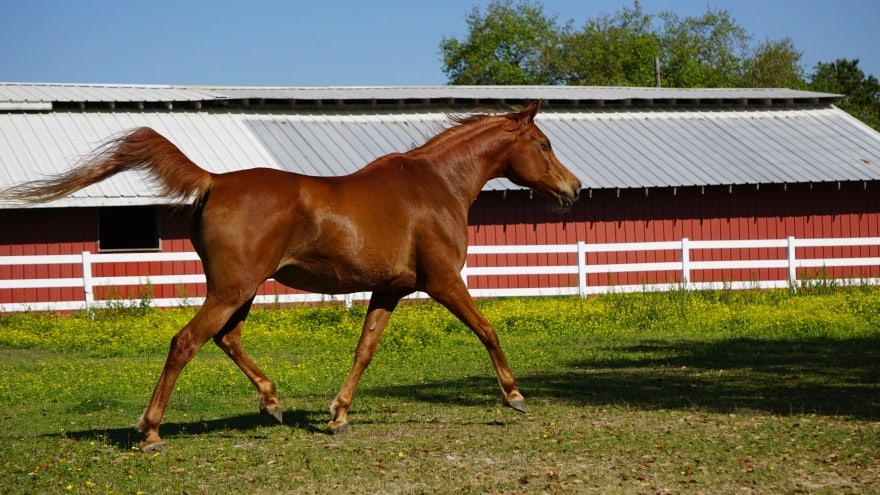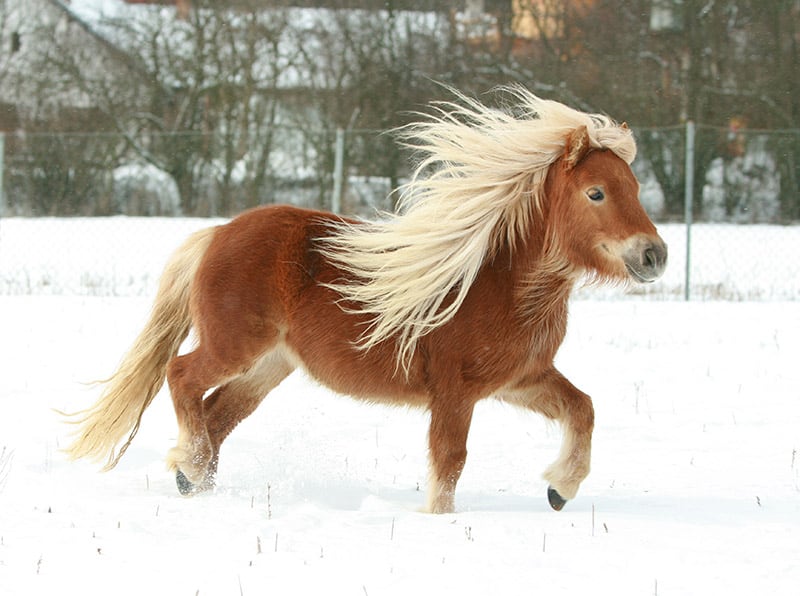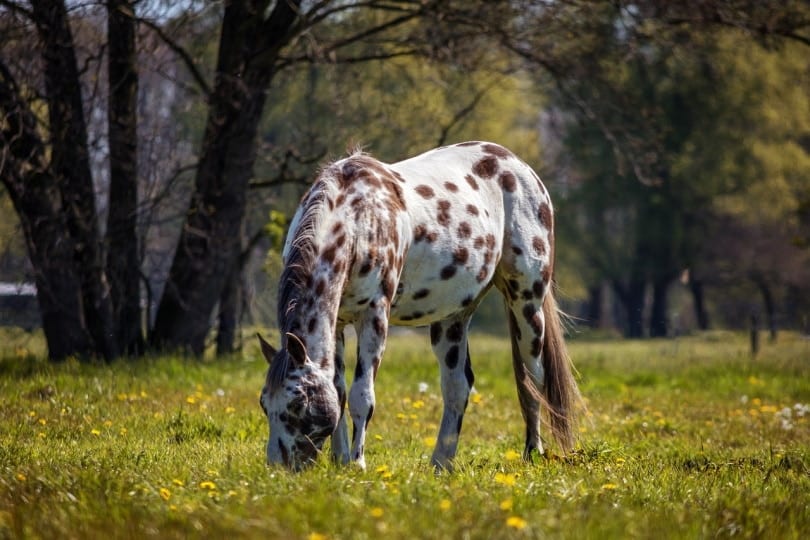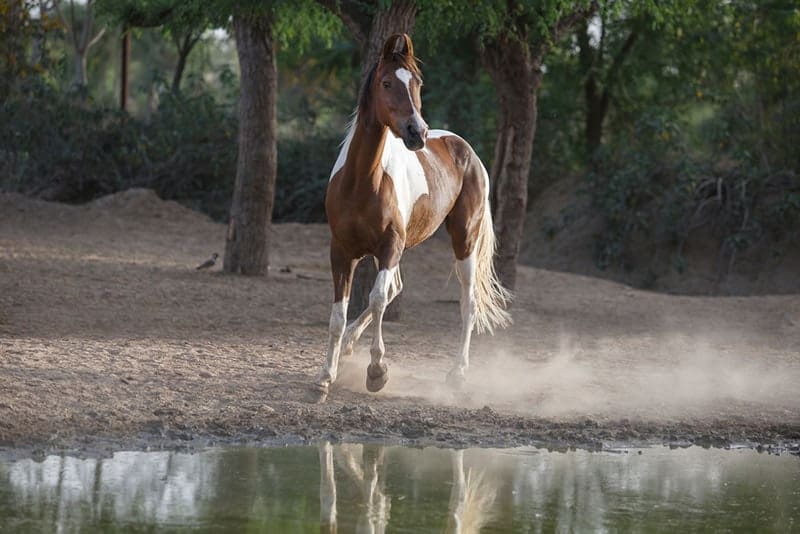Classification of a horse is a multi-pronged system, allowing each breed to belong to several types of horse class!
The characteristics of a horse, the horse’s origin, and the type of horse training devoted to a breed are all elements used in determining horse class. Horse classification is not a streamlined system where there is an ‘either/or’ type of horse class for each breed. The different characteristics of each horse as well as the uses it was bred for offer a variety of methods of determining horse class. But furthermore, a horse can be recognized in multiple categories.
Each horse breed is distinguished by specific characteristics. Characteristics include horse colors, temperament, and gait. Other factors are horse origin and the horse backgrounds, which are distinct for each breed. These also distinguish each breed as belonging to a particular type of class. Then the horse training of each breed will also distinguish it as belonging to yet another particular type of class. Consequently horses are often distinguished in more than one horse class.
Horses are often categorized by continent and/or country of origin. In general terms, if we look back at the original domestication of the species, smaller light horse types began in Northwest Europe; heavier built horses with a convex profile began in North Eurasia, the somewhat lighter hot blooded horses originated in Central Asia, and the more refined dish shaped profile horses began in Western Asia.
When domestication led to selective breeding, many characteristics changed as horses were bred to suit specific purposes. Stud books were established by many breeders. These record the ancestry of a breed and manipulate its breeding program to establish certain characteristics or standards for that breed. Stud books can be either closed or open; that is, they can accept only those individuals whose parents are already recorded in the stud book, or they can allow entry of horses whose documented pedigree would infuse traits which the breeders consider desirable in the development of their breed standard.
Learn about all types of horse breeds:
Horse Class by Groups
Horse classification by major groups is one of the most easily recognized designation methods. Modern horses can be divided into two major groups, which can relate to horse origin. The light horses are smaller and faster, and originally evolved in the southern hemisphere. The heavy horses, or draft type, evolved in the northern hemisphere. Ponies are believed to have further evolved from the original light horses.
For purposes of this classification horses are commonly divided into light horses, draft horses, and ponies. Unless specifically chosen for breeding, most mature male horses are castrated, and are referred to as geldings. An uncastrated male is a stallion. A mature female is a mare. Young horses, or foals, can be fillies (female) or colts (male). A horse’s height is measured in hands, each of which is four inches, measured from the ground to the top of the withers, or highest point of the back at the base of the neck.
The light horses

The majority of riding horses around the world fall into the category of light horse. All light horse breeds are originally descended from the Arabian type horse; the Arabian horse is the oldest breed on record with documented lineage. The light horses are considered either “hot” or “warm” blooded. Horses classified as being hot blooded are those resembling the Arab types; warm blooded horses are those breeds into which some heavy horse characteristics were introduced, similar to the European bred competition horses of today. Centuries of selective breeding for specialized uses, as well as various environmental conditions, have influenced the development of hundreds of different breeds. Most of these breeds range from 14.2 hands high to 17.2 hands high, and are generally faster and less bulky than the draft type and taller than the ponies. These horses are widely used for recreation and show.
The heavy horses

The heavier draft horse was developed from the bulkier type of equine found in the northern hemisphere. These hardy horses evolved to survive in a colder harsher climate, and are much heavier and broader than the light horses. These breeds are referred to as cold blooded, in reference to their quiet and calm temperament. They are heavy in the body, strong legged, and often have “feathers”, or long hair, covering their large hooves. As early as the roman times, Europeans used these huge types of horses for heavy labor. They were used for pulling heavy loads in cities as well as for farm work. In the middle ages, their great strength and stamina made them a popular war horse, being easily able to carry a heavily armored knight into battle. They range in size from approximately 15.2 to 20 hands high, and are slower but more powerful than the light horse.
The ponies

Ponies are generally considered to be 14.2 hands or smaller at maturity, however this is a general rule with many exceptions. Pony breeds have a slightly different appearance than the light horse breeds. They usually have thicker manes, tails and coats. They are proportionately shorter legged and rounder through the barrel. They have somewhat shorter and thicker necks and wider, stronger bones. They are well known for their superior intelligence and more tractable temperaments. Many of the pony breeds evolved where there was inferior nutrition and which resulted in a smaller breed. Ponies generally require less diligence in their care and often tend to be more independent than the other types of horses.
Horse Class by Characteristics
Categorization by Temperament
Horses are classified as being hot blooded, those resembling the Arab types; warm blooded horses are those similar to the European competition horses; and cold blooded breeds which are the quieter, heavier Draft type horses.
Categorization by Horse Colors
Some horses are bred for specific coat color or pattern. These include the pinto, the paint, the palomino, the appaloosa, and the buckskin. While these may or may not be actual breeds in the truest sense of the word, they are considered “color breeds” some of which must meet other requirements as well.

Categorization by Horse Gait
Some breeds are bred for a specific type of movement, or gait. Included among the gaited horses are the Tennessee Walking Horse, the Missouri Fox Trotter, the Saddlebred, the Icelandic, and the Peruvian Paso.
Categorization by Type – Related to Usage or Discipline
Horses have been used for work, sport and leisure for centuries. Some horses are bred to excel at a specific discipline. Horse training for some of these disciplines include polo, racing, driving, fox hunting, jumping, dressage, three day eventing, plantation riding, western disciplines such as cutting cattle and reining, gymkhana, endurance, and trail riding.
Featured Image Credit: Daria Koskova, Shutterstock
